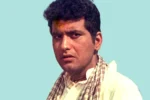New Delhi, Aug 14 (PTI) Love for the nation the theme and celluloid the prism, Hindi films down the decades have tracked the evolution of India since 1947 and presented the many moods of patriotism – right from “Shaheed” in the heady year after Independence to “Fighter” in 2024.
Moving from the scratchy black and white era to sleek colour, the rich spectrum of narratives has dwelt on themes of sport, war, disillusionment and romance, some rousing, others reflective. The movies are many but some stand out in the long history of India seen through the cinematic lens of various filmmakers.
The history of India seen through cinema also reflected the concerns of the time, going from the human-machine conflict in Dilip Kumar-Vyajanthimala starrer “Naya Daur” (1957) and the agrarian preoccupations of a new India in Manoj ‘Bharat’ Kumar’s “Upkar” (1967) to modern-day counter terrorism in “Uri: The Surgical Strike” and, most recently, Hrithik Roshan’s high-octane actioner “Fighter”.
Perhaps the earliest blockbusters in the ‘patriotic genre’ – marked by gooseflesh moments whether through song, plot or personal stories of sacrifice and triumph — were “Kismet” (1943), which starred Ashok Kumar and featured the still popular “Door Hato Duniya Walon, Hindustan Hamara Hai”, and “Shaheed” with Dilip Kumar. The subtext of both was the fierce desire for independence.
With independence in 1947, the focus shifted from rebellion to nation building. The patriotic man of the 1950s and 1960s was a builder of dreams, someone who contributed to a newly independent nation’s development.
The era saw the rise of characters who were engineers, farmers, and soldiers in films such as “Do Bigha Zamin” (1953) and “Haqeeqat”, the 1964 film about the India-China war.
The 1970s witnessed a surge of multi-star vehicles like “Purab Aur Paschim,” “Roti Kapda Aur Makaan,” and “Balidaan,” which celebrated Indian culture while simultaneously dramatizing its perceived threats.
The 1980s showcased a diverse cinematic landscape. While “Kranti” offered a fictionalised portrayal of India’s freedom struggle, films such as “Jaane Bhi Do Yaaron” and “Albert Pinto Ko Gussa Kyon Aata Hai” employed satire to critique societal ills. The Shashi Kapoor produced “Vijeta”, starring son Kunal Kapoor as an Indian Air Force officer, also stood out for channelling the spirit of patriotism without any chest thumping.
From the 1990s, patriotism was showcased in various hues, starting from the portrayal of the global Indian, the one living abroad but maintaining strong ties with her Indian roots.
Films such as “Dilwale Dulhania Le Jayenge” and “Pardes”, starring Shah Rukh Khan, explored themes of identity and the challenges of balancing traditional values with modern lifestyles.
In the early 2000s, too, Khan played men who preserved their Indian identity in a foreign land while navigating the challenges of a globalised world. His 2004 movie “Swades” offered an insight into this dilemma.
Directed by Ashutosh Gowariker, the film explores the idealism and the dilemmas faced by an NRI who quits his job at NASA to work for the betterment of rural India.
There were also films like “Border” (1997) and “Gadar” (2001), both starring Sunny Deol. One set in the 1971 India-Pakistan war and the other during Partition, both films wore their patriotism on their sleeves.
“Sarfarosh”, starring Aamir Khan and Naseeruddin Shah, was a standout at this time for the way it explored the threat of terrorism.
The turn of the century gave a populist twist to themes of patriotism in “Pukar”, “Mission Kashmir”, “Fiza” and “Yahaan”.
There were biopics as well with Ajay Devgn’s “The Legend of Bhagat Singh”, “Shaheed-E-Azam”, starring Sonu Sood, and “23rd March 1931 Shaheed” with Bobby Deol in the lead.
Aamir Khan’s “Lagaan” (2001) and SRK’s “Chak De India” (2007) used sports to portray two distinct aspects of patriotism.
In “Lagaan”, patriotism is tied to resistance against colonial oppression and the fight for social justice and self-respect with the villagers’ struggle symbolising a broader desire for freedom and dignity. The film uses cricket, originally a British sport, as a metaphor for the struggle against the oppressive colonial regime.
In “Chak De! India”, national pride finds expression through a struggling women’s hockey team and its quest for an international trophy.
Then there was Aamir’s “Rang De Basanti” (2006). The film begins as a story of a group of college students who join a British filmmaker’s documentary on freedom fighters Bhagat Singh, Chandrashekhar Azad, Ashfaqulla Khan and Sukhdev Rajguru.
The friends realise that they have to take on the system the way their heroes did to fight corruption and injustice.
In the past decade, there has been a resurgence of dramas putting the spotlight on bravado of Indian soldiers. The focus was on external threats to the nation in a range of films, including “Uri: The Surgical Strike” (2019), starring Vicky Kaushal, and Sidharth Malhotra’s “Shershaah” (2021).
These movies reignited the image of the patriotic man as a soldier or a spy, bravely defending the country from its enemies. Alongside these, there has also been Alia Bhatt’s “Raazi” (2018), celebrating the unsung woman spy from the 1970s, and Kaushal’s “Sardar Udham”(2021), a Shoojit Sircar-directed biopic on Udham Singh, who assassinated Michael O’Dwyer in London to avenge the 1919 Jallianwala Bagh massacre.
As India continues to evolve, so does the portrayal of its patriots, each era adding new dimensions to what it means to love and serve the nation.












